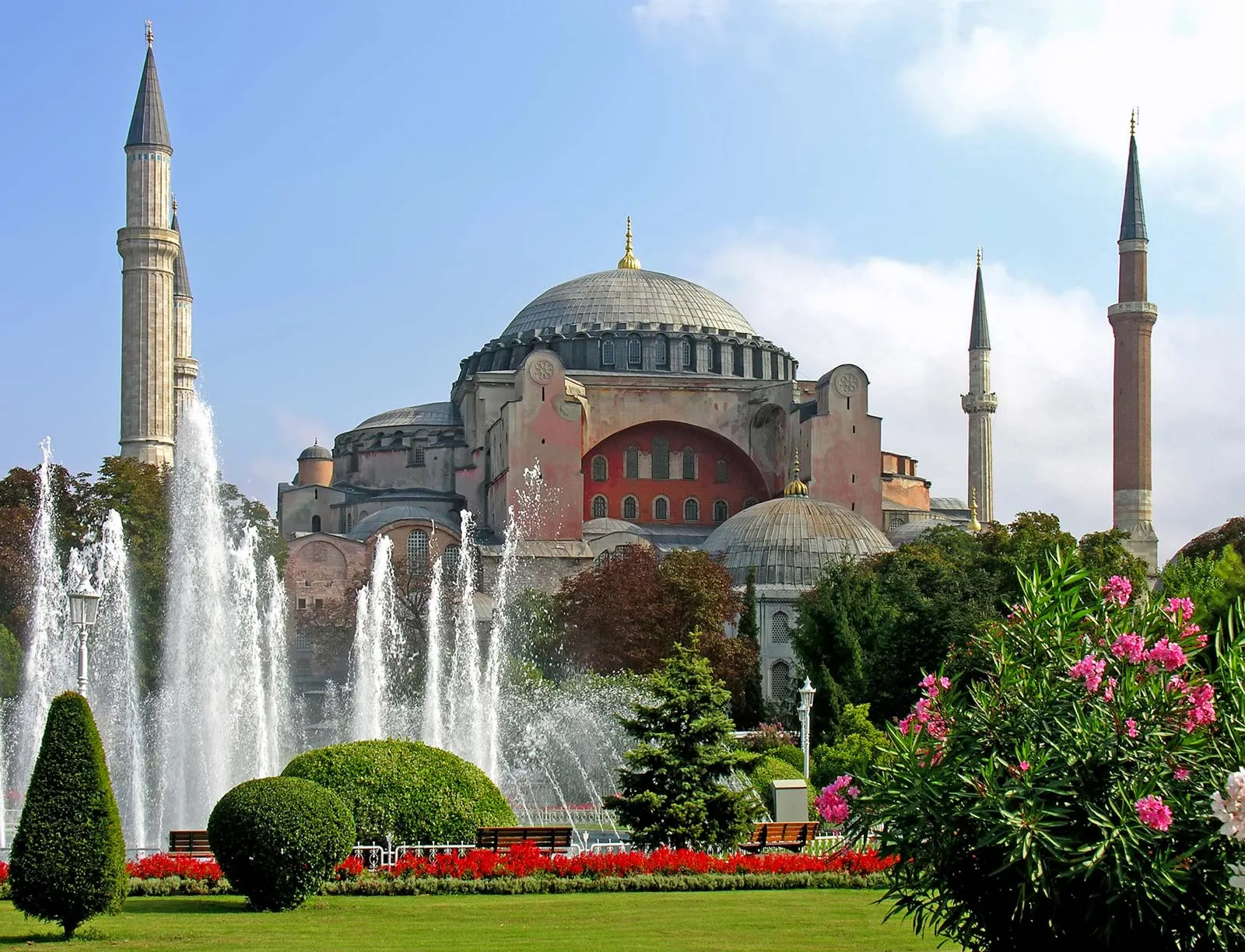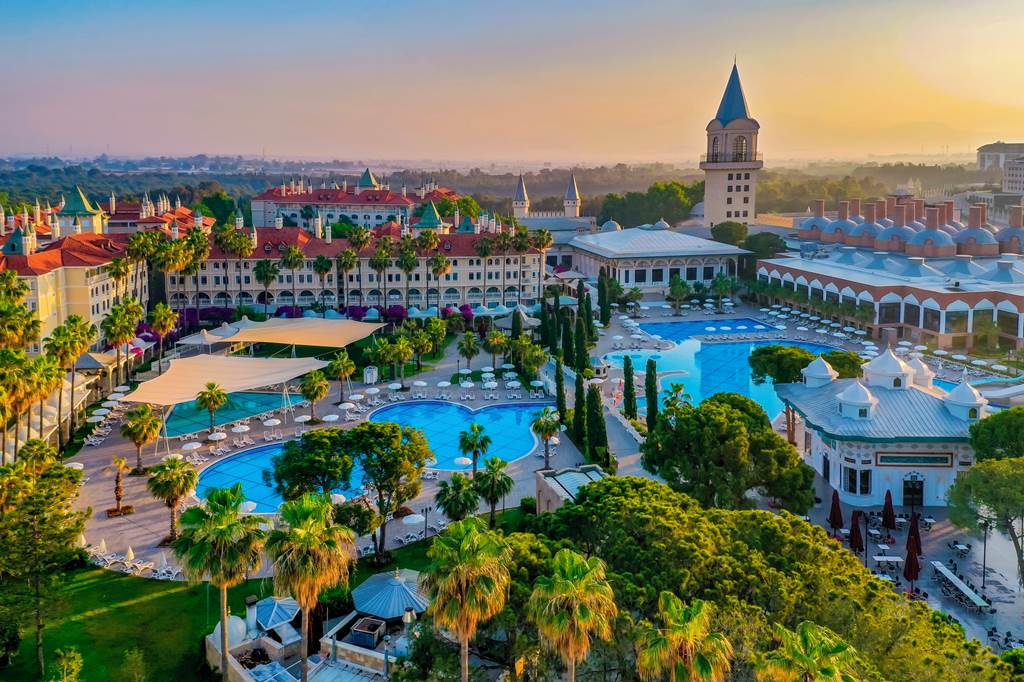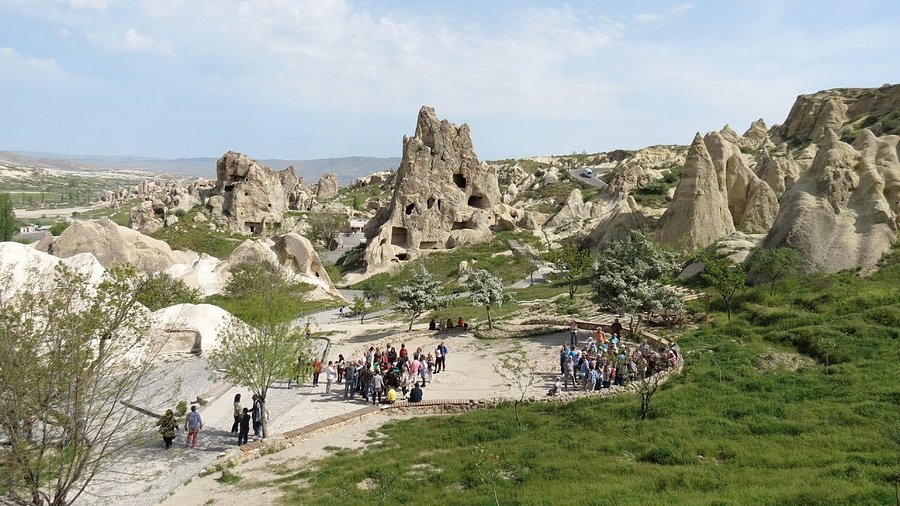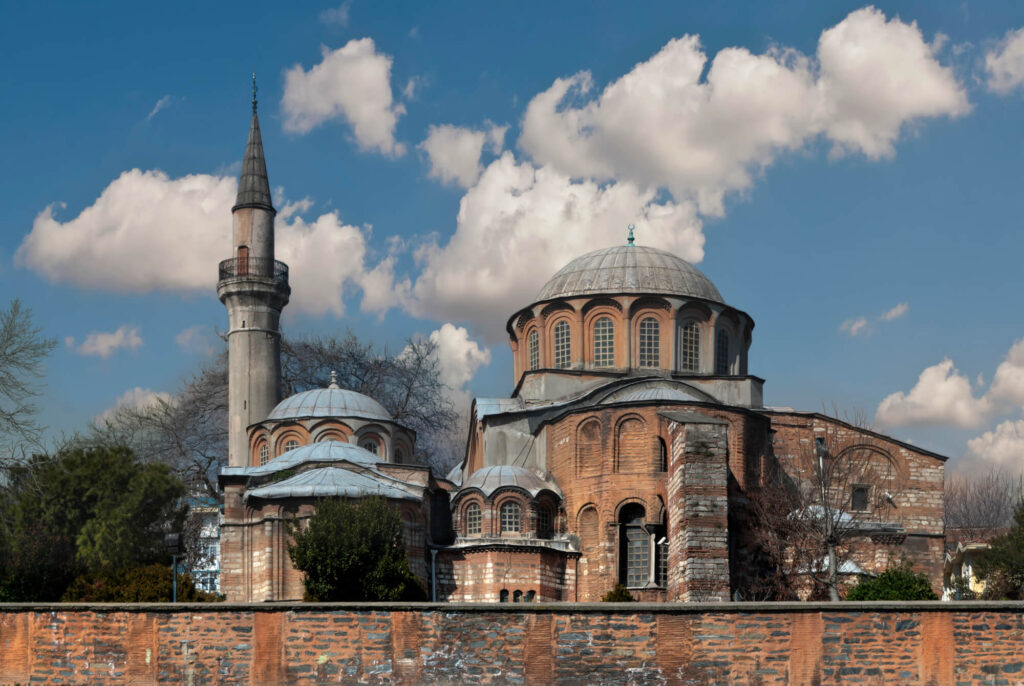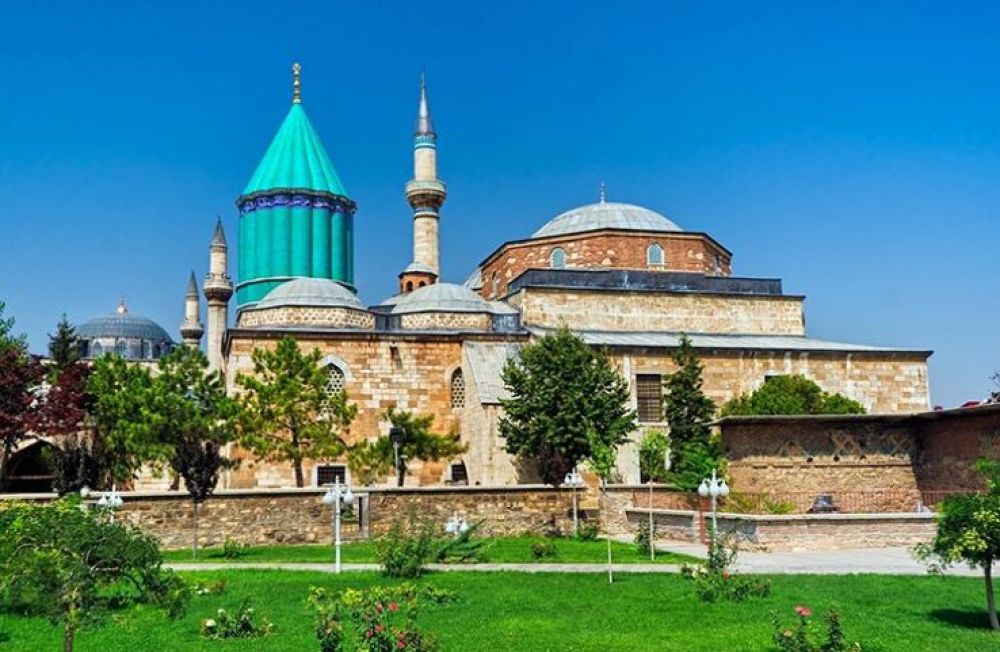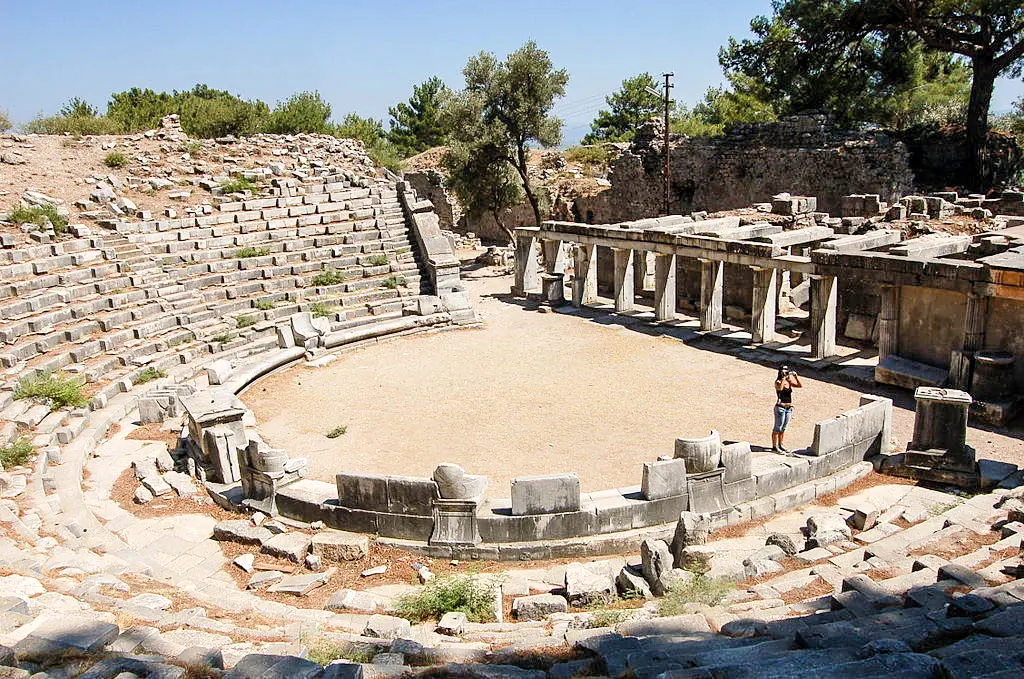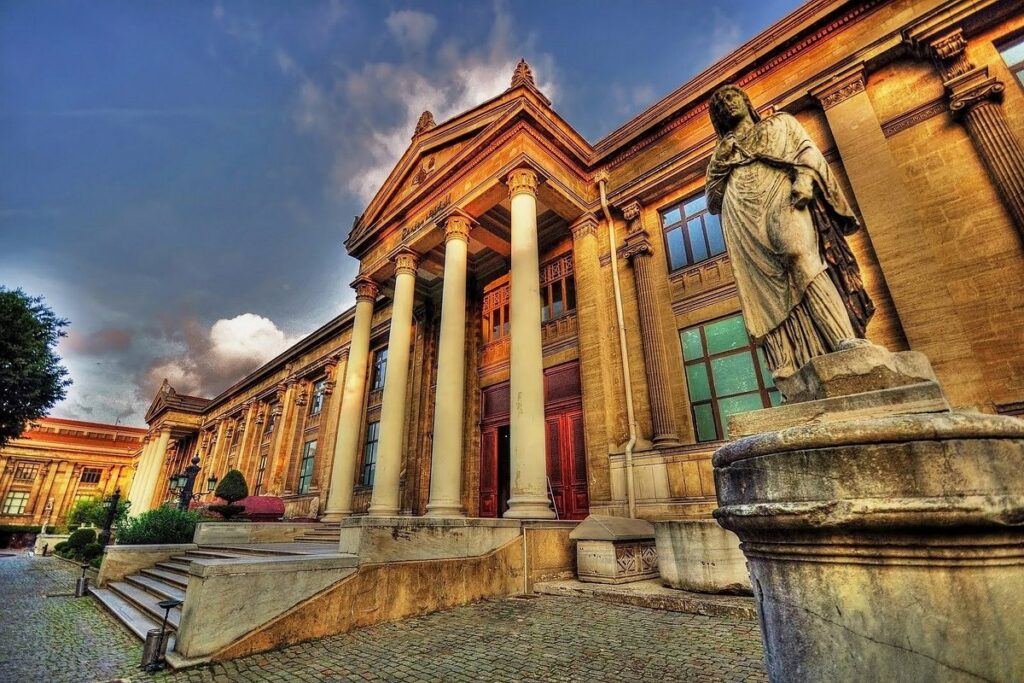Located near Topkapı Palace, the İstanbul Archaeology Museums comprise three main buildings: the Museum of the Ancient Orient, the Archaeology Museum, and the Tiled Pavilion. Together, they hold one of the world’s richest collections of artifacts from across the ancient Near East, classical antiquity, and Ottoman periods. The complex was founded in the late 19th century by Osman Hamdi Bey, an artist, archaeologist, and museum director.
Current Status
The main building is undergoing extensive renovations, so visitors can currently explore only the Tiled Pavilion, Museum of the Ancient Orient, and the Ancient Age Sculpture section of the Archaeology Museum, where the famous sarcophagi are displayed. Full reopening is expected soon.
Museum of the Ancient Orient
This building, dating from 1883, houses pre-Islamic artifacts from the Ottoman Empire’s vast territories. Highlights include an 8th-century BC Hittite relief of the storm god Tarhunza and colorful glazed-brick panels from Babylon’s Ishtar Gate, featuring lions, dragons, and bulls.
Archaeology Museum
Opposite the Museum of the Ancient Orient, this imposing neoclassical building contains extensive collections of classical statues, sarcophagi, and exhibits covering İstanbul’s ancient, Byzantine, and Ottoman history. Among the treasures are the sarcophagi from the Royal Necropolis of Sidon, discovered by Osman Hamdi Bey in 1887. Don’t miss the remarkable Alexander Sarcophagus and Mourning Women Sarcophagus.
The northern wing features sarcophagi from Syria, Lebanon, Thessalonica, and Ephesus, including detailed anthropoid sarcophagi and the Sidamara Sarcophagus from Konya, adorned with horses’ legs and cherubs. Roman mosaics and Anatolian architectural pieces are also displayed here.
Tiled Pavilion
Built in 1472 under Mehmet the Conqueror, with its marble-columned portico added in the late 18th century, this pavilion displays exquisite Seljuk, Anatolian, and Ottoman tiles and ceramics from the 12th to early 20th centuries. The collection boasts İznik tiles from the 14th to 17th centuries, considered among the finest in the world. A standout piece is the beautiful mihrab from the İbrahim Bey İmâret in Karaman, dating to 1432.
Visitor Information
The complex is easily accessible on foot from Topkapı Palace or Gülhane Park. A joint ticket covering Topkapı Palace (excluding the Harem), Aya Sofya, and the Archaeology Museums costs ₺135.

